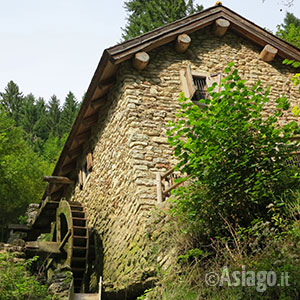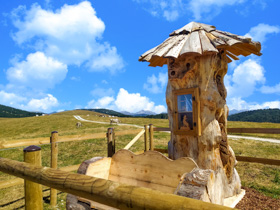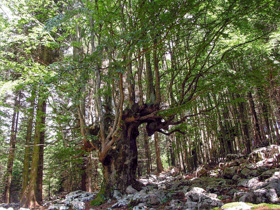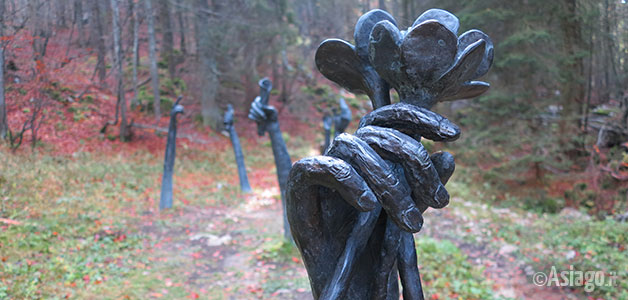The territory of Gallium is rich in things to see, from ancient buildings that recall customs and traditions of past times, to the wonders of the local flora and fauna, which represent a treasure of inestimable value from a naturalistic point of view.
Here are some of the attractions you can visit:
SANCTUARY OF THE MADONNA DEL BUSO
It is a temple dedicated to the Madonna del Caravaggio, built in the first half of the '800, destroyed by bombing in the First World War and then rebuilt. Near the Sanctuary of the Madonna del Buso, there is a narrow canyon carved into the rock by the Frenzela stream.
VALLEY OF THE COVOLA MILLS

Not far from the center of Gallium is the Valley of the Mills, characterized by the abundance of water, which is rare given the karst nature of the plateau, and therefore, in the past, has made it ideal territory for the construction of mills. In its first part the valley takes its name from the stream that crosses it, the Covola, and walking there will be like going back in time: for paths where mills and washhouses stand out in the past used to grind cereals and tann hides.
SPITZKNOTTO
In the hamlet of Stoccareddo, in Val Frenzela, stands the Spitzknotto or Spizegonotto , a huge boulder that, like the Altar Knotto di Rotzo, resembles an altar for its shape.
LIBR'ALBERO

The Libr'Albero is a work of art and a refuge for lovers of reading and nature, located along the splendid itinerary of Mount Longara in Gallium. Created from the trunk of a centuries-old spruce, felled by the devastating Vaia storm in the autumn of 2018, this sculpture testifies how something exceptional can be born even from the most disastrous moments.
Carved on the large and gnarled trunk of the tree, you can find small animals of the local fauna, and inside it has been created a small case containing books by Mario Rigoni Stern and other stories about the mountain.
Right in front of the Libr'Albero, a bench made from the same centuries-old tree offers an irresistible invitation to sit and savor the moment. Here, relaxing and immersing yourself in a good read, surrounded by a breathtaking view, is a unique and extraordinary experience.
In summary, the Libr'Albero is a symbol of resilience and fusion between art, nature and culture. A place where the heart and mind can find an unforgettable haven of peace.
Continuing from here, along the route, you can reach other points of interest, including the memorial dedicated to the visit of Pope John Paul II in 1988 and the Monte Cimon Observatory, a panoramic point where you can enjoy a wide view of the central basin of the plateau and the surrounding mountains.
ANCIENT TREES - Melette di Gallio e Puche

At the Melette di Gallio you can immerse yourself in a fairytale landscape, where majestic centuries-old and monumental beech trees, known as "le Puche," become the silent narrators of an ancient and fascinating story. The term "Puche" comes from the ancient Cimbrian language and means "beech," a linguistic tribute that emphasizes the ancient presence of these specimens in the territory.
Characterized by particular and almost mysterious shapes, these beech trees invite the observer to free his imagination and imagine the stories and secrets they could hide. These singular conformations are the result of "capitulation," an ancient practice now fallen into disuse, which involved cutting the trunk of the tree to a height of about 2 or 3 meters in order to stimulate the plant to produce new fronds and branches.
But the charm of Puche is not limited to their extraordinary shape. These monumental beech trees are living witnesses of local history and traditions, and their presence continues to enchant and inspire those lucky enough to be faced with such wonders of nature.
PATH OF SILENCE
The Path of Silence winds through the woods in Campomuletto. This particular itinerary aims to keep alive the memory of the war events that affected the Asiago plateau in the years 1915-18. Along the way, 10 artistic installations have been placed, each accompanied by a poem or a writing, with the aim of making visitors reflect on the horror of war and the tragedy that took place in those places a hundred years ago.
